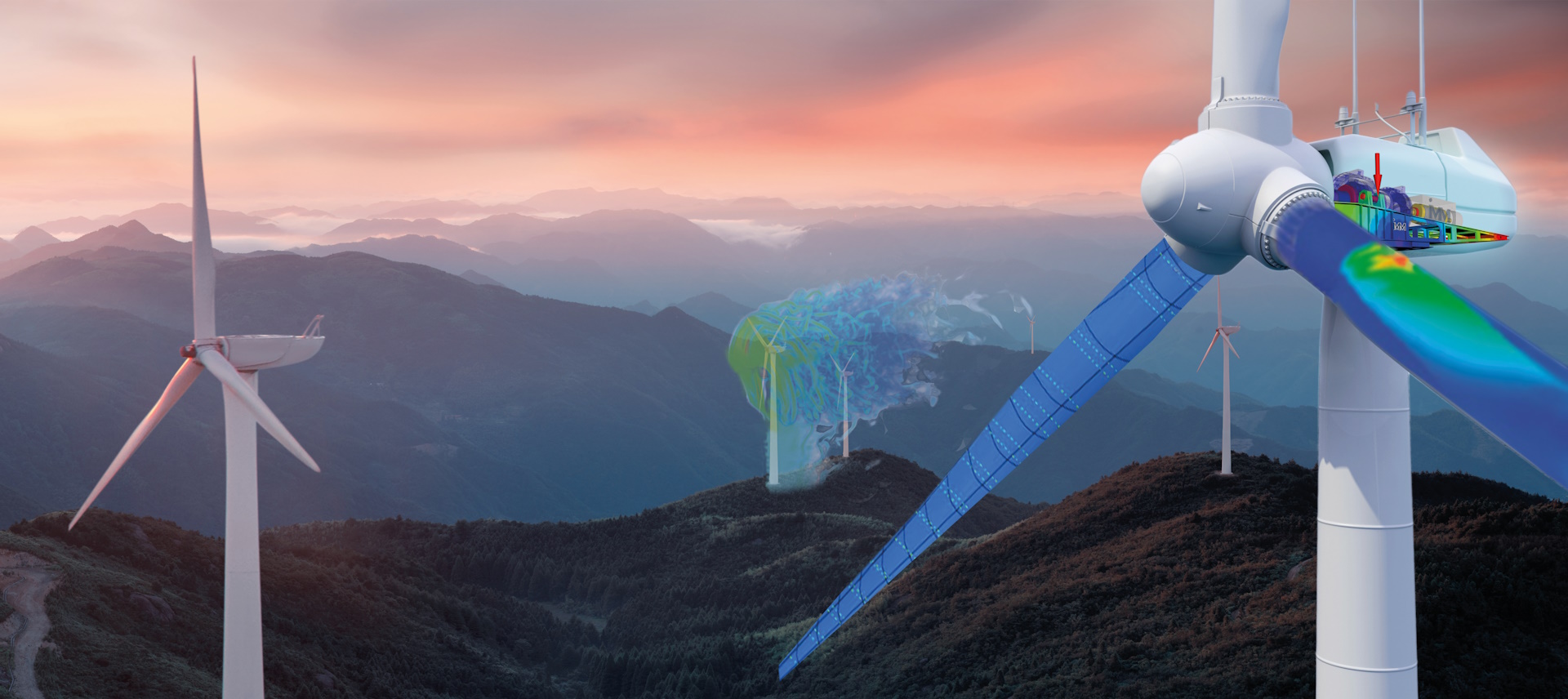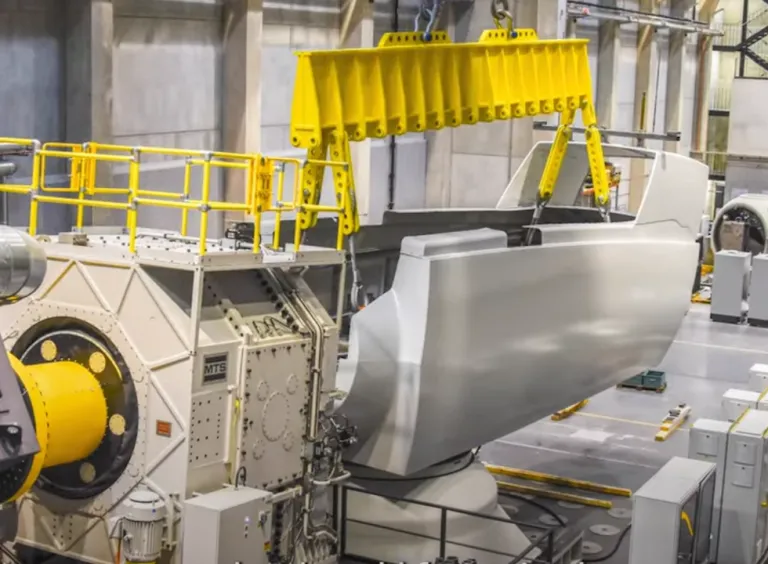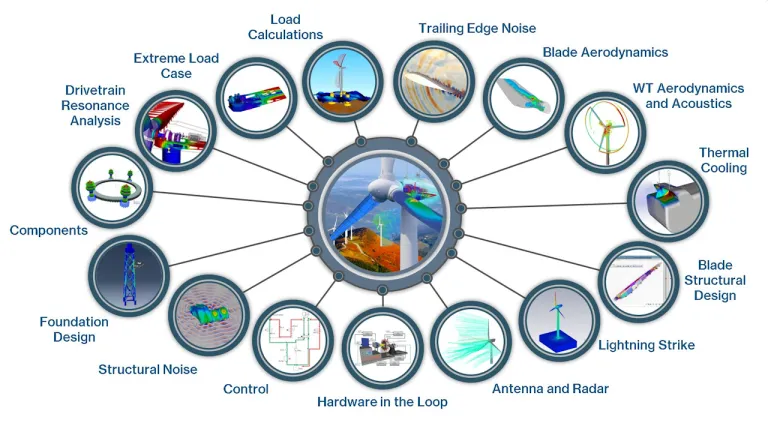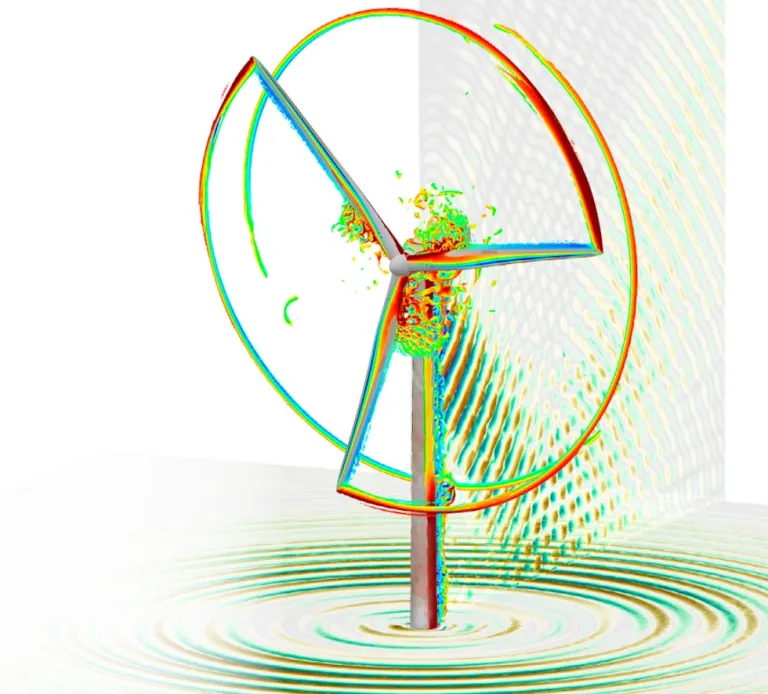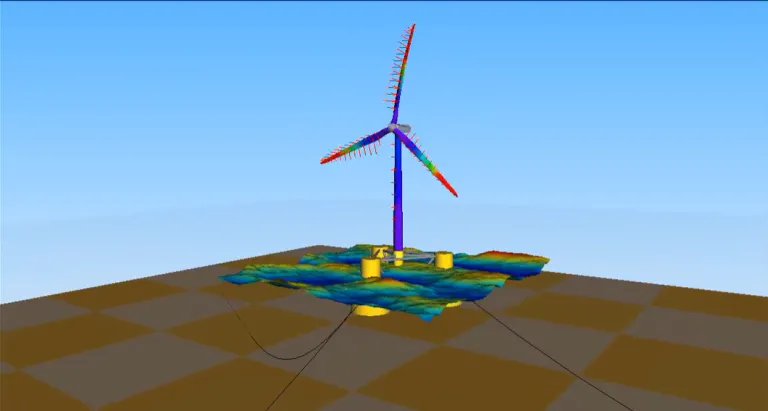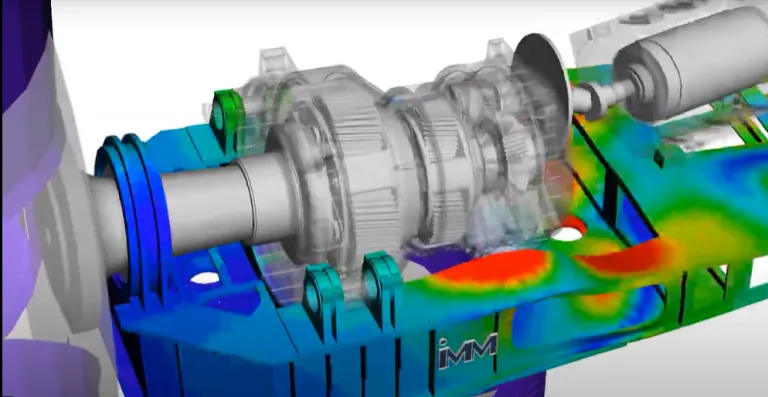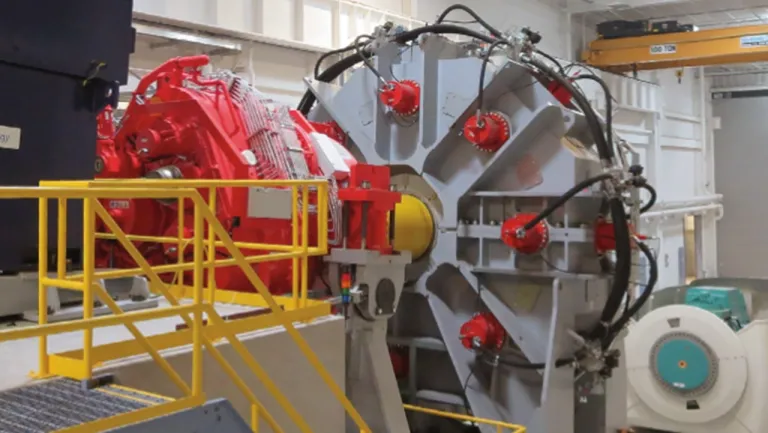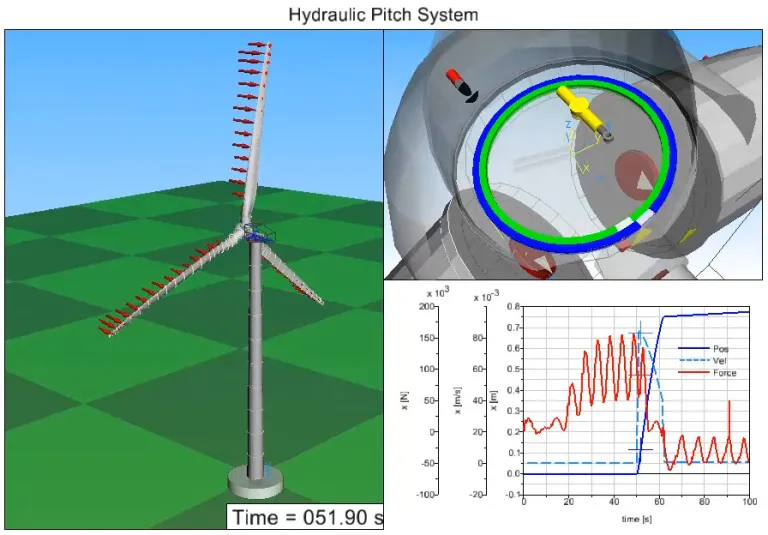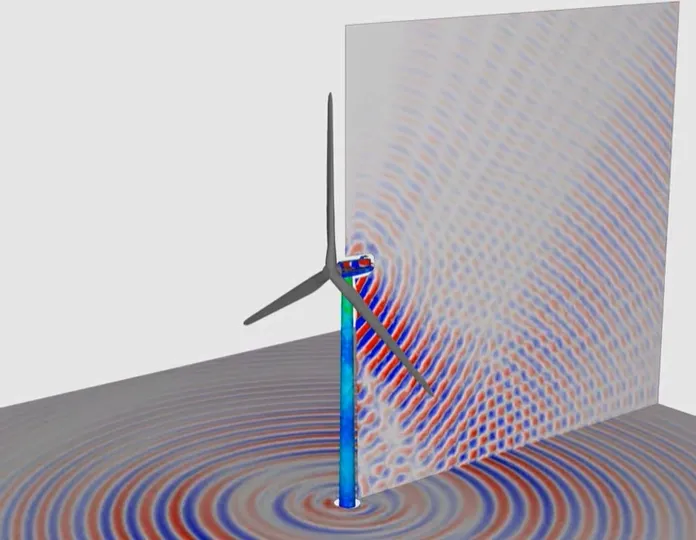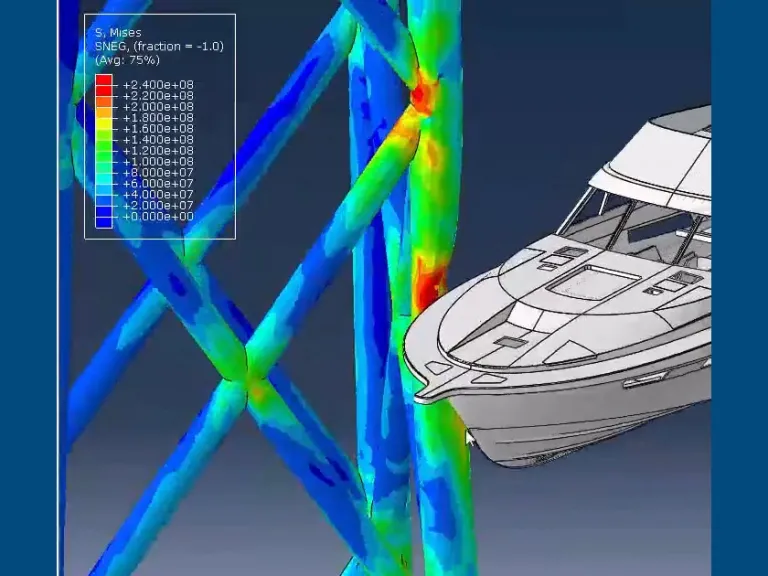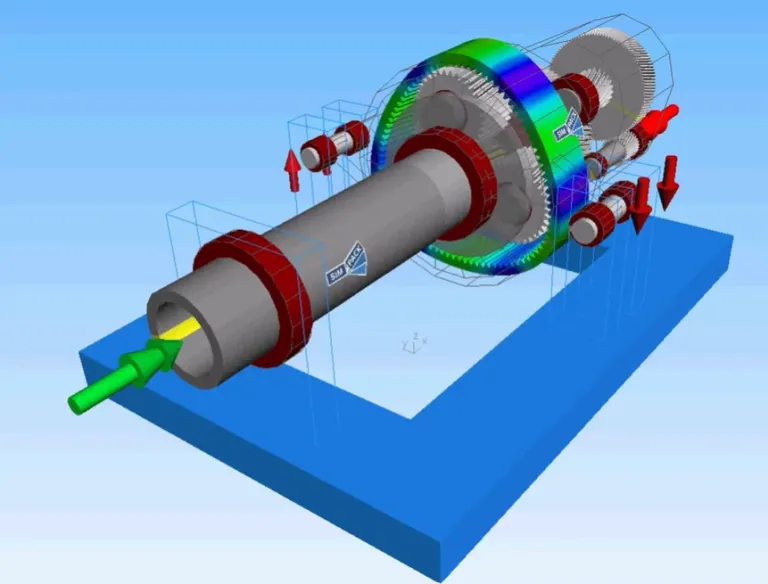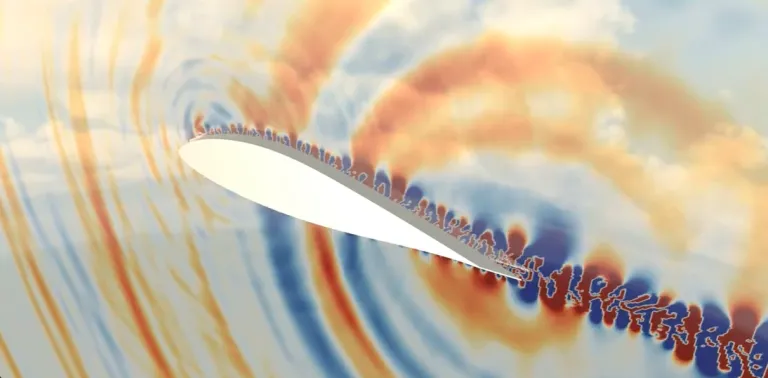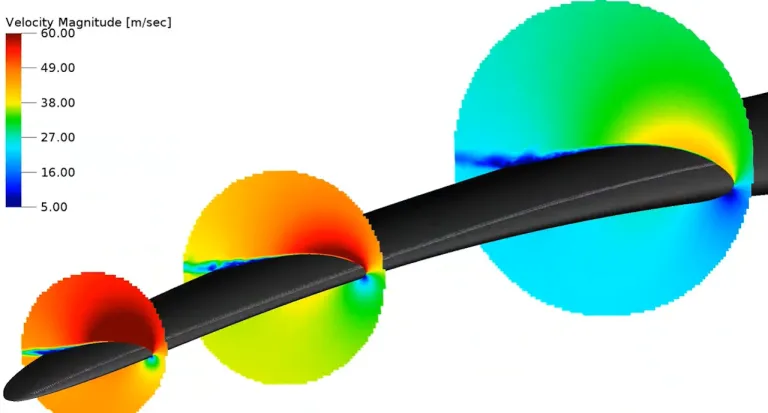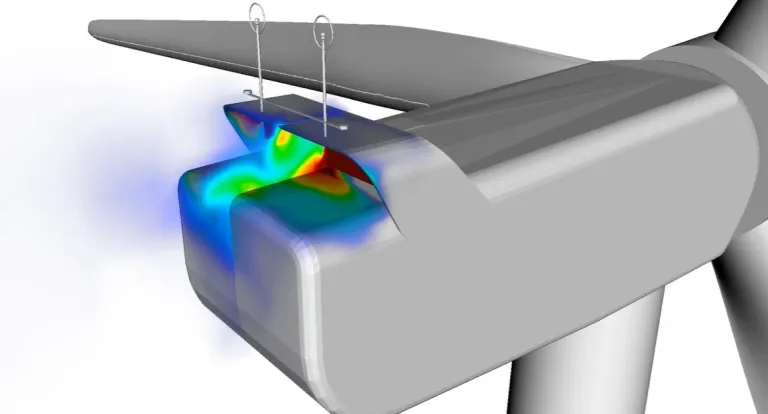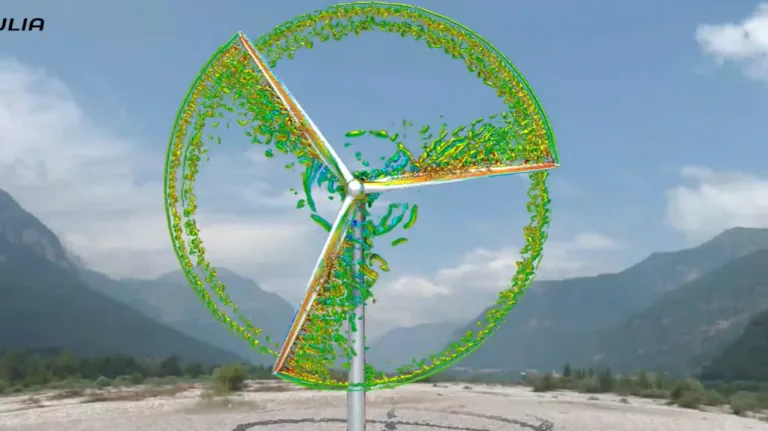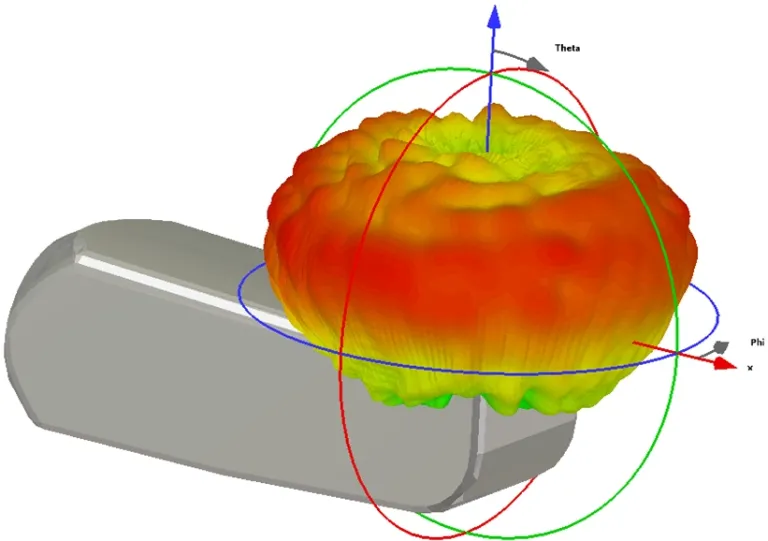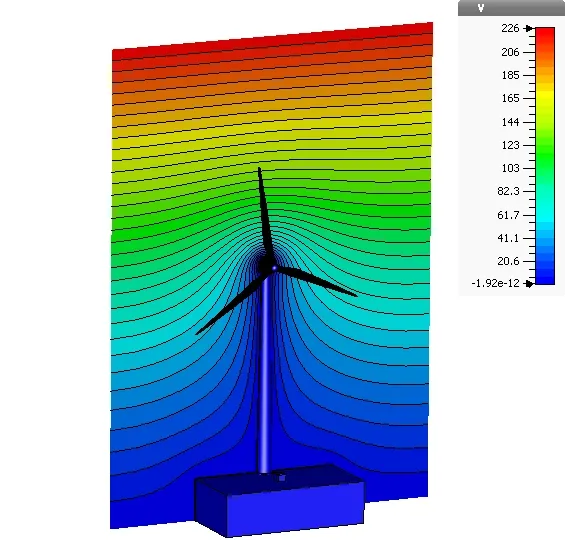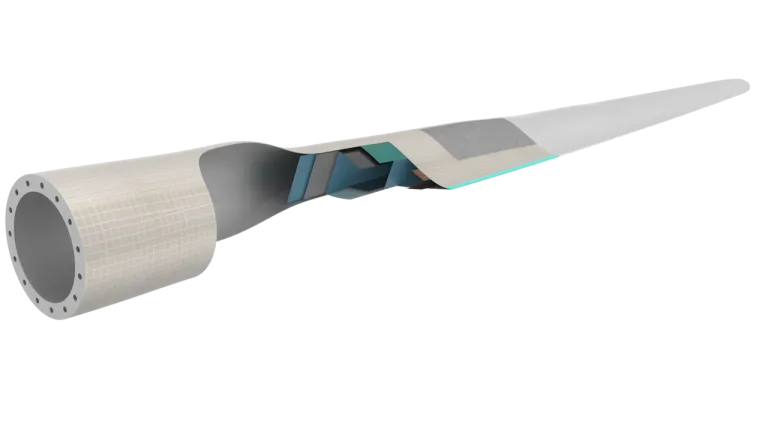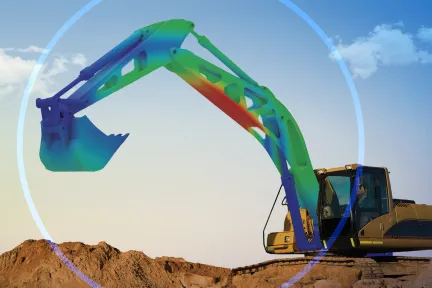Wind Turbine Engineering
Simulate and optimize complete wind turbine systems, subsystems, and individual components with SIMULIA’s industry solutions.
What Are the Current Challenges in Wind Turbine Engineering?
Wind energy is a leading source of sustainable power, driving the need for wind turbines that deliver higher output, greater reliability, cost efficiency, and quieter operation.
Key industry trends include the development of larger turbines, advanced engineering designs, and the rapid expansion of offshore wind farms, where ideal wind conditions and abundant space offer significant opportunities.
Offshore turbines, however, face unique challenges such as extreme load cases, nonlinear blade deformation, and harsh environmental conditions. These demands require advanced solutions to ensure durability, reliability, and optimal performance.
SIMULIA Solutions for Wind Turbine Engineering
SIMULIA provides advanced simulation technologies to optimize turbine design, addressing critical aspects like aerodynamics, drivetrain resonance, and structural noise reduction. With virtual twin technology, engineers can predict, optimize, and test every turbine component before physical prototypes, reducing costs and accelerating innovation. For example, tools like the SIMPACK Real-Time Simulator allow engineers to analyze dynamic behavior in real-time, ensuring turbines perform reliably under varying conditions.
Through the 3DEXPERIENCE platform, SIMULIA enables real-time collaboration and a system-level view of all components, empowering teams to design efficient, innovative turbines for both onshore and offshore applications.
Key Benefits of SIMULIA Wind Turbine Engineering Solutions
Cost Savings
Innovate to save costs through all-encompassing simulations
Product Optimization
Utilize Lattice Boltzmann CFD for design advantages
First-to-Market
Use the 3DEXPERIENCE Platform to enhance collaboration
Risk Avoidance
Precise models prevent critical resonances and reduce downtime
Optimize Wind Turbine Design and Performance
SIMULIA Wind Turbine Engineering solutions optimize turbine design with advanced workflows, from precise load calculations to automated reporting. Key features include extreme load simulations, drivetrain resonance analysis, and component optimization for reliable performance under harsh conditions.
The solutions also address structural noise reduction, control system optimization, and thermal cooling, enhancing efficiency while minimizing risks. This system-level approach streamlines blade design, ensures safety, and meets regulatory standards, enabling engineers to confidently deliver high-performance turbines.
Wind Turbine Engineering Made Easy with SIMULIA Community
Tackling the complexities of wind turbine engineering is easier with the support of the SIMULIA community. By joining, you gain access to a wealth of resources designed specifically for engineers, including guided tour videos on key functionalities like load calculations and flexible body creation. Dive into e-seminars and an extensive events archive to uncover insights that can transform your projects.
The SIMULIA community also connects you with industry experts, enabling collaboration, strategy sharing, and the exchange of best practices. Whether you're optimizing designs or solving engineering challenges, the collective expertise of the SIMULIA community is here to help you innovate and succeed. Join today and take your wind turbine engineering to the next level!
Wind Turbine Engineering Workflows
- MBS Certifications
- Component, Structure, Control
- Aerodynamics
- Blade, Design, EMAG
Load Calculations
Our fast, accurate and robust solver technology enables us to model any type of wind turbine at any fidelity level. Automation is used for
- Template Scripts for all Design Load Cases
- Result and report generation Integration
- Easy integration into existing workflows
- Reading and writing of any data format type
Extreme Load Cases
Simulations of extreme loads must often consider additional effects in order to achieve accurate results:
- Nonlinear blade deformation
- Flexibility of large components in addition to the blades and tower
Drivetrain Resonance Analysis
Critical Resonances:
- Identification, comprehension, elimination Automated
- Run-up, resonance detection, result generation
Antenna and Radar
Optimize antenna placement
- Ensure good communication in all relevant directions
- Ensure regulations for local air traffic control are met
- Reflections from moving rotors can interfere with radar systems
Lightning Strike
Ensure optimal lightning protection and avoid risk.
- Attachment area prediction
- Currents on wind turbine and in cabling
Blade Structural Design
Streamline the complete process for blade design and enable new and innovative designs while minimizing time-to-market and risk.
- Load Calculations
- Composite Concept Design
- Shear section properties analysis
- Blade flexibility analysis (static and dynamic)
- Composite Detailed Design
- Detailed plies design, incl. drop-off
- Stress, buckling and fatigue
- Damage and failure analysis
- Optimization and preparation for manufacturing
SIMULIA Industry Process Experience for Wind Turbine
Wind power is in the air and all around us. As a clean and renewable energy source, it can decarbonize global power systems and curb the effects of climate change. While onshore wind farms have made significant strides in electrifying our energy mix, meeting the ambitious goals of the Paris Agreement requires scaling up various renewable technologies, including offshore wind.
Start Your Journey
The world of Wind Turbine Engineering is changing. Discover how to stay a step ahead with SIMULIA.
FAQs about Wind Turbine Engineering
Also Discover
Learn What SIMULIA Can Do for You
Speak with a SIMULIA expert to learn how our solutions enable seamless collaboration and sustainable innovation at organizations of every size.
Get Started
Courses and classes are available for students, academia, professionals and companies. Find the right SIMULIA training for you.
Get Help
Find information on software & hardware certification, software downloads, user documentation, support contact and services offering
